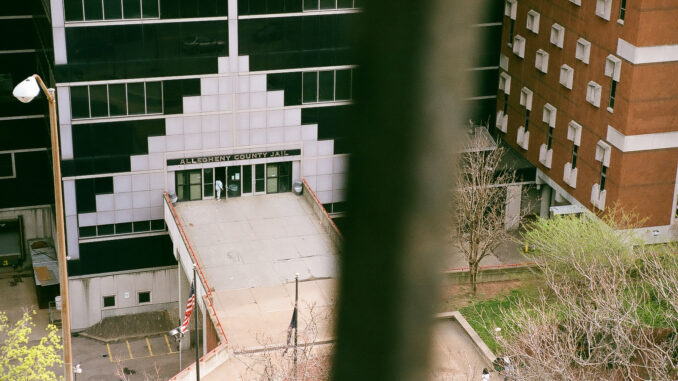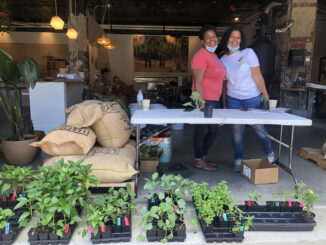

Katia Faroun & Carissa Haslam | The Duquesne Duke
03/18/2021
As cries for justice continue to be heard across the United States, local criminal justice experts and incarcerated individuals came together to imagine a society where there truly is justice for all.
Duquesne hosted a webinar titled “Restorative Justice and Re-Entry Panel” on March 11 that discussed the American criminal justice system and the transition from incarceration back into society. Hosted by the Sociology Club and moderated by sophomore criminal justice and sociology student Deidra Hubay, the panel invited experts — including professors and current inmates — and students to engage in an open discussion.
Panelists began the discussion by introducing the idea of restorative justice and what it looks like in a practical sense. Duquesne sociology professors Norman Conti and Ann Marie Popp and Sarah Kuehn, an associate professor in Slippery Rock University’s department of criminology, offered their professional perspectives on the definition of the phrase and what makes it a different type of justice.
“It’s peacemaking, it’s community building, so it’s much more than just focusing on the offenders,” Kuehn said.
Criminal justice traditionally puts its attention on punishing offenders and avenging their victims. Restorative justice, however, involves all parties and turns its perspective toward the relationships between individuals and the society they come from. It’s solution-driven, rather than punishment-driven.
“Our current justice system is retributive justice,” Conti said. “ … Restorative justice looks at the harms suffered by all the engaged parties.”
Restorative justice aims to create a fair process toward achieving peace for those involved in an injustice, and according to the panelists, the United States’ criminal justice system does not work in support of this cause, and acts more as an “injustice system,” according to Conti.
“We have the highest incarceration rate on the planet. That tells you that something is terribly wrong,” Conti said.
One of the hardest hurdles to overcome for incarcerated individuals who leave the system — also known as returning citizens — is re-entering society. Once individuals exit the system, they continue to face obstacles that carry over from their time inside, according to Terrell, a member of the panel and returning citizen who joined the webinar from the Lafourche Parish Correctional Complex in Louisiana.
“You’re not really free because of parole and lack of employment opportunities and societal judgment,” Terrell said.
Returning citizens find it difficult to get accustomed to life outside mainly due to the stereotypes and biases society has towards offenders. According to Kuehn, the recidivism rate in the nation is at 75% — not because individuals want to reoffend, but because society has such a hard time welcoming them back.
What American society doesn’t see; however, is the benefits that returning citizens bring once they exit the system, according to Kuehn.
“It would be a waste to keep them behind bars,” she said. “ … They contribute to society and I think that’s the big benefit — and it makes our communities much safer.”
There’s a learning curve that comes with all types of reintegration. Many incarcerated individuals are separated from the rest of society for decades, which means they miss out on years of historical context, technological developments and social change.
For Charlie, a member of the Elsinore Bennu Think Tank for Restorative Justice and returning citizen who served 18 years for his first major offense, this was a huge challenge during his return to society.
“Whenever you’re inside, time stops. And when you get outside, you have to catch up,” Charlie said.
During the panel, Charlie recounted the experience of going to buy his first phone after re-entering society. Released in 2004 after 18 years disconnected from the outside world, he was shocked to learn that cordless phones existed.
The disconnection returning citizens feel is further heightened by the response of the communities they return to. While the message of rehabilitation suggests that returning citizens should be fully welcomed back into their community after they have served their time, many institutions, organizations and individuals continue to view them as outsiders and do not give them the opportunity to reintegrate.
Black Americans are disproportionately affected by the criminal justice system, with 27% of all individuals arrested in 2016 being Black — double their share of the total population, according to a 2018 report to the United Nations by The Sentencing Project. The panel emphasized the rejection of biases that promote stereotypes around returning citizens, especially those who are Black.
Attendees were encouraged to promote change in their communities and offer suggestions on how to assist returning citizens as they re-enter. The panelists emphasized the necessity of celebrating the return of incarcerated individuals into communities, reminding people that instead of viewing them in judgment, seeking to encourage returning citizens and fully welcome them back is beneficial to everyone.
The panelists agreed that having an incarceration record in American society is like wearing a scarlet letter.
“We see criminal acts as all defining — people are complex and they have multiple characteristics and traits that contribute to society,” Popp said. “No one should be defined by one moment in their life.”




